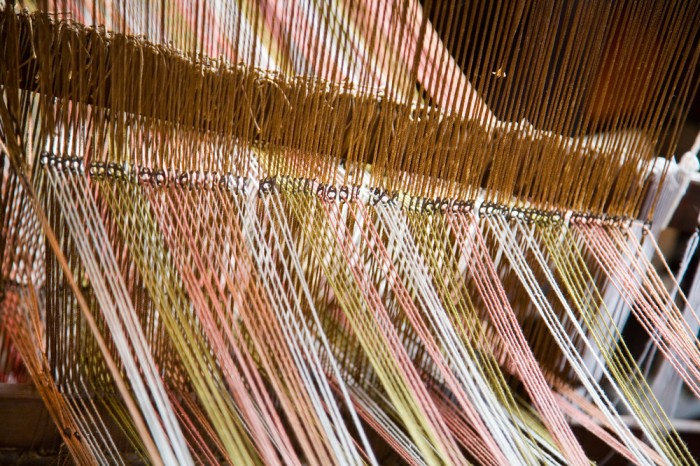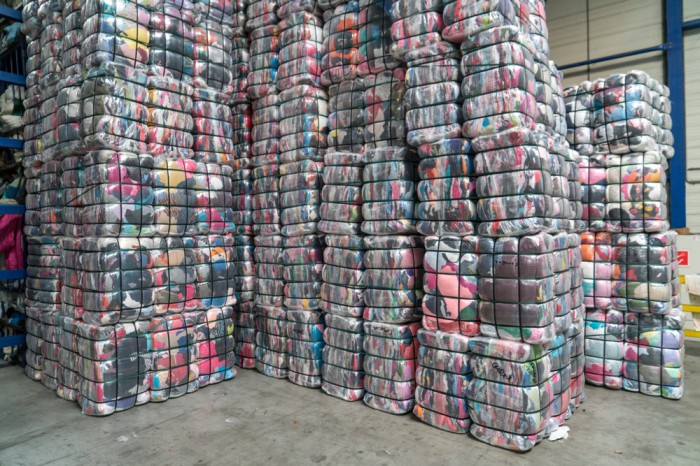Quantifying the Textile Export Potential of India



The Indian textile sector has always had a strong presence in the country's financial capabilities. It is quite significant. Besides supplying basic requirements, the textile sector adds to the country's manufacturing capacity, job creation, and exchange earnings.
It is seen from various studies that textile output in India is expanding in areas such as fibre, textiles, and textile manufacturing. There’s also an improvement in the estimated partial profitability and growing trade balance in the world economy. When considering the characteristics of a manufacturer or the industry sector, the terms production (the level of output), effectiveness (output per unit of input), and efficacy (actual output compared to prospective output) are commonly used as indicators. Despite their tight relationship, these metrics can produce various rankings when it comes to assessing effectiveness.
Textile exports account for roughly 30% of India’s overall exports. As the only industry with substantial value added at every stage of manufacturing, textiles are self-sufficient, right from the procurement of raw materials to the finished products.
As India established limited liberalisation and privatisation for economic development in the early late 1970s, it knew the significance of trade. From 1948 until 1990, the Indian economy was managed by a socialist/communist planned economic system based on structural adjustment and industrial licensing. India's export growth had been disappointing.
The effect of COVID on the Indian T&A sector
All commercial operations, with the exception of critical commodities and services, came to a screeching halt as a result of the pandemic.
The textile and garment industries were no different. Here’s a look at how they suffered.
- Closure of manufacturing
For almost 2-3 months, the sector was immediately shut down, except for a few companies that committed their production practices to PPE manufacturing. However, during the next few months, the majority of the units operated at unsatisfactory utilisation levels.
- Delayed transportation
The pandemic hampered transportation and restricted exports of goods and services, harming the whole value stream. India's net trade in April and May of 2021 was almost 50% lower, week on week, when compared with the previous year. The industry missed orders as a result of market uncertainty, international and domestic buyers cancelled or halted their purchases.
- Poor offline store sales

Shutdown regulations across the country caused a drop in the retail clothing market for at least 4 to 5 months. Furthermore, sales throughout the holiday and celebration months were heavily impacted.
- New consumer trends of the future emerged.
Due to growing market demand, India's e-commerce sales of commodities and clothes are expected to skyrocket in 2022. Work-from-home opportunities created a market for casual clothing apparel over formal wear.
Government initiatives
The national clothing and textile sector in India produces five percent of the country's GDP. 7 percent of the industry contributed in terms of value and volume, and 12% in terms of export revenues. India is the world's sixth-largest exporter of textiles and apparel.

India is a major supplier of linen and jute around the globe. India is also the world's leading producer of silk, contributing 95 percent of all hand-woven cloth. The Indian technological textiles market is estimated to be worth $16 billion, accounting for almost 6 percent of the world market. Here’s a look at some of the steps taken by the government to boost the growth of the textile sector:
- The Indian government enacted a number of export development programs for the textile industry. It has also permitted 100 percentage FDI in the sector via the automated approach. The Rs. 10,683 crores (US$ 1.44 billion) PLI plan is projected to provide a significant boost to textile makers. The concept seeks to reward MMF (man-made fibre) apparel, MMF fabrics, and ten categories of Technological Textiles items.
- The Indian government has announced a unified consumption tax rate of 15 percent on man-made fibres (MMF), MMF threads, MMF textiles, and garments, effective from January 1, 2022.
- Mr Piyush Goyal, Union Textile Minister, declared the launch of a mega handloom complex in Manipur as well as a handloom and handicraft village in Moirang, Bishnupur.
- From the financial years 2016 through 2022, the government offered money of Rs. 17,830 crore (US$ 2.2 billion) for the 'Amended Technological Up-gradation Fund Scheme' (A-TUFS) to promote the Indian textile sector and market liberalisation.
- Flipkart and the Himachal Pradesh State Arts and crafts and Handloom Corporation Ltd. (HPSHHCL) inked a letter of intent (MoU) in mid-2021 to assist the government's master crafters, weavers, and artisans in showcasing their signature items on e-commerce platforms.
- Mr Piyush Goyal - Union Minister of Textiles, Commerce, and Industry, Consumer Affairs, Food, and Public Distribution - stated that initiatives are required to increase the manufacturing capacity of Indian textile businesses from Rs. 50,000 crore (US$ 8.06 billion) to 128,000 crores (US$ 16.80 billion) in three years. He stated that a three-year aim should be created to raise Indian textile sales from Rs. 1000 crore (US$ 335.92 million) to Rs. 10,000 crore (US$ 1.34 billion). He then called for the establishment of a group composed of all weavers, trainers, device manufacturers, market analysts, as well as other participants to identify ways and methods to attain these goals and advance the Indian textile sector as a whole.
- The Defence Research and Development Organisation (DRDO) is assisting the Indian textile sector in manufacturing fibres in order to reduce reliance on Chinese as well as other international garment imports for army fatigues. The Indian military industry has expressed its support for the Indian technological textile industry.
- To assist the handloom and crafts industry, considerable efforts have been made to register labourers on the Government e-Marketplace (GeM), which will offer them a larger market and allow them to promote their products straight to various authorities and organisations. On the GeM portal, 243,167 weavers/artisans/handloom organisations were registered as of March 20, 2022.
- As many as 70 businesses have appealed for assistance under the Rs 10,600-crore production-linked incentive (PLI) plan for the textiles and apparel industry, with expenditures totalling around Rs 2.5 million crores.
Benefits would be provided for a period of 5 years under the program. It will continue to operate till 2029-30.
There are 2 kinds of investors who can participate in the plan. Those who spend at least Rs 300 crore will be qualified for a 15% bonus in the first year if their revenue exceeds Rs 600 crore. Another kind is those who spend at least Rs 100 crore. They would also receive 11% in the first year if their turnover exceeds Rs 200 crore. During the first year, both types of stakeholders will be required to show a 25% yearly increase in turnover. However, in both circumstances, the advantages will decrease by 100 percentage points for each approaching year.
The road ahead
India is launching big initiatives to expand its sophisticated manufacturing base. As a result of the coronavirus outbreak, there is an increase in demand for textile materials in the form of PPE suits and accessories. The government is assisting the services by providing funding and equipment support.
The Indian textile company's future appears bright, driven by solid home consumption and also terms of trade. With rising materialism and expendable money, the retail system has faced remarkable expansion in the last decade, thanks to the introduction of major multinational businesses into the Indian market, including H&M, Guess, and Next.
Increased discretionary income has resulted from rapid economic expansion. This has resulted in an increase in sales volume, resulting in a massive domestic economy.
Textile items play a significant role in the world production chain, with India ranking sixth in the world when it comes to apparel, home, and technological product exports. In the agricultural and manufacturing sectors, almost 40 million people are currently in the wool industry.
Achieving the $65 billion export target—up from $36 billion in 2019—will necessitate a significant increase in India's commitment to five major areas: garments, fabrics, home textiles, man-made fibre and yarn, and technological textiles.
To meet these aims, both the government and the private sector must take on ambitious projects. And the government is likely to be up to the task. The recent introduction of several schemes such as MITRA, PLI, and RoDTEP demonstrates the government's significant attention to this sector.
It will be vital for the administration to check up on such initiatives with actual integration, and it will be much more essential for business participants to successfully use these programs.



















